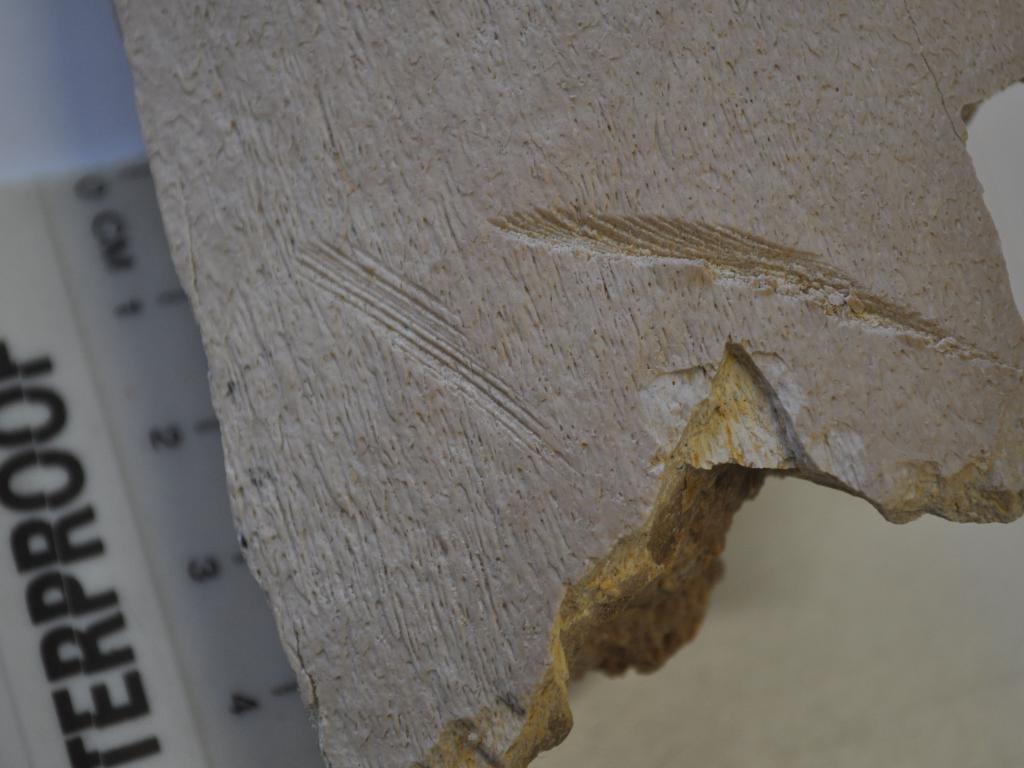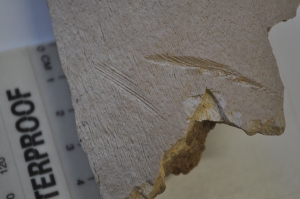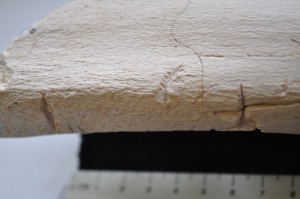Five million year old baleen whales from the West Coast of South Africa



Sharks tooth marks on whale mandible (lower jaw) from West Coast National Park. Photo: Dr Romala Govender
Partnerships between academic institutions and museums highlight the value of museum collections in generating new knowledge. The research, on the fossilised whale bones from the Langebaanweg fossil locality (better known as the West Coast Fossil Park), about 120 KM from Cape Town, was conducted by Iziko Curator Cenozoic Palaeontology, Dr. Romala Govender; UCT palaeobiologist, Prof. Anusuya Chinsamy-Turan; and whale biologist, Dr Michelangelo Bisconti from the Natural History Museum of San Diego, California. This collaboration forms part of a greater research partnership between Iziko Museums of South Africa and the University of Cape Town.
By studying the distinctive morphology of the distinctive ear bones (called the tympanic bullae) preserved from this site, the research revealed that these 5 million year old whale bones were very similar to fossil whales from the Mediterranean. It also indicated that they were baleen whales (like the humpback whale found along our South African coast). Previous studies by Govender and Chinsamy-Turan described distinctive tooth marks on many of the whale bones that were made by sharks as they fed on the whale carcasses.
Several seal and penguin bones were also recovered from this locality. Thus, already 5 million years ago whales, seals, sharks and penguins were part of the marine ecosystem along the West Coast of South Africa. This is in stark contrast to the drastic changes in the biodiversity of the land flora and fauna over the 5-7 million year period.